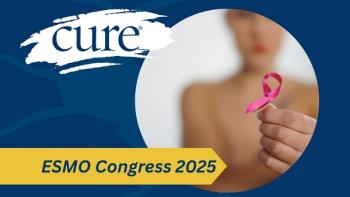
- Fall 2010
- Volume 9
- Issue 3
One Diagnosis, Different Journeys
Only a few years ago, Bevelle and Edwards would have automatically received the same treatment. Not so today.
In September of 2009, Patty Bevelle, a 45-year-old Dallas high school teacher, learned she had stage 1, invasive breast cancer. The tumor was 1.8 centimeters and tested hormone receptor—positive for estrogen and progesterone. Bevelle approached her treatment with the desire to live a long, healthy life.
In May of 2010, Jane Edwards, a 68-year-old retired teacher in East Texas, learned she had stage 1, invasive breast cancer. The tumor was 1.5 centimeters and tested hormone receptor—positive for estrogen and progesterone. Edwards approached her treatment with the desire to live a long, healthy life.
Only a few years ago, Bevelle and Edwards would have automatically received the same treatment. Not so today.
In fact, the two Texas women reflect changes that may affect a portion of the more than 60 percent of all women diagnosed with breast cancer that is classified as early stage.
No longer seen as the guarantee of a long, healthy life, an early-stage diagnosis has become only one piece of a picture that now includes a decade’s worth of advances in diagnostic tools and molecular biology. These advances allow oncologists to assess each woman’s individual risk that her cancer could recur—knowledge that determines whether additional treatment with chemotherapy might reduce the risk.
The testing and decisions may make for confusion to the newly diagnosed patient, but they have one simple goal: minimizing the risk of recurrence.
The major goal of treating early-stage breast cancer is to reduce the risk of recurrence, both in the breast or chest wall (local control) and the more ominous distant recurrence when the cancer moves out of the breast and nodal area (systemic control), explains Robert Mennel, MD, director of clinical oncology at Baylor Charles A. Sammons Cancer Center in Dallas, Texas.
What kills, Mennel explains, is not the cancer in the breast, but the destructive path the cancer takes if cancer cells leave the breast and travel throughout the body to healthy organs such as the liver, lungs, or brain.
Increasingly, researchers are looking at the connection between local recurrence and a reduction in breast cancer mortality. A recent study by the Early Breast Cancer Trialists’ Collaborative Group presented a number of findings based on 78 randomized clinical trials evaluating the extent of surgery and the use of radiation therapy in early-stage breast cancer. What has been called the most striking finding from the study was that “improved local control at five years resulted in a highly statistically significant improvement in both breast cancer survival and overall survival at 15 years.”
Local control in early-stage breast cancer is defined as removal of part of the breast (lumpectomy) paired with radiation (read "
With lumpectomy, there needs to be a clean margin around the tumor, meaning that tissue surrounding the removed cancer must contain no stray cancer cells, Perez explains. That margin, Perez says, has to be at least one millimeter; statistics show that less than that increases risk of local recurrence. After lumpectomy, patients receive radiation.
Mastectomy typically has not involved radiation therapy, but Perez points to the use of radiation with mastectomy for some patients, a more controversial consideration as mastectomy has traditionally been seen as a way to avoid radiation. At the Mayo Clinic, Perez says, radiation is now generally used after mastectomy for tumors larger than five centimeters or if more than three lymph nodes are positive.
Bevelle says she researched her options and had decided on lumpectomy and radiation. Then an MRI showed suspicious areas in her other breast.
“The surgeon offered to biopsy them, but I wanted to be sure I would only do cancer once, so I told my surgeon that I wanted a bilateral mastectomy, and she agreed,” Bevelle says.
Due to their estrogen receptor—positive status, both women were offered hormonal therapy, which usually begins after other treatment has been completed. It includes ongoing use of a drug that disrupts estrogen activity or its production in the body as a way to block its growth-stimulating effect on residual tumor cells.
Both hormonal therapy and chemotherapy are systemic, meaning designed to target the breast cancer cells that may have escaped the breast to travel throughout the body. But the treatments have side effects that must be taken into consideration.
Mennel says that hormonal therapy is not a black and white decision, although it can be seen as the lesser of systemic therapies in terms of side effects, which depends on the woman’s age and other factors. “These drugs are not benign,” he says. “We think they are benign because we are comparing them to drugs that have a lot of side effects, such as the chemotherapy drugs.”
To determine if chemotherapy would reduce the risk for recurrence, both tumors underwent a test called Oncotype DX, a gene expression profiling test for estrogen receptor—positive breast cancer that identifies factors unique to each woman and determines whether chemotherapy would offer added protection.
Mennel calls Oncotype DX a good tool. Even with all the existing information derived from pathology and tumor characteristics, it may still not be clear if adjuvant chemotherapy would further reduce her risk of recurrence.
For Bevelle, Oncotype DX provided the added information she needed to proceed with chemotherapy without doubts, says her oncologist, John Pippen, MD, chair of the breast site committee at Baylor Charles A. Sammons Cancer Center in Dallas.
Bevelle was reluctant to undergo chemotherapy, Pippen says, because she was in the middle of the school year. He wanted to be absolutely positive she would benefit from chemotherapy.
“When a tumor comes back high grade, it is subjective depending on what the pathologist says, and it can have variations,” Pippen says. “With Oncotype DX you get a recurrence score that is a woman’s clear gene expression profile, so it’s much more definitive.”
Mennel and Pippen concur that it’s a test that is best performed by the oncologist or a surgical oncologist after discussion with the patient when there is doubt about whether chemotherapy should be used. “It’s expensive,” Pippen says, “and in many cases there is no need for it.”
Bevelle made peace with the need for chemotherapy when Pippen told her it would decrease the risk of her cancer coming back. “I told myself chemotherapy wasn’t a big deal,” she says, “and then I asked the nurse if I was going to lose my hair. She just looked at me and nodded. It was the only time I cried.”
Bevelle underwent four rounds of Cytoxan (cyclophosphamide) and Taxotere (docetaxel) while teaching aerobics and wellness classes each day. She says today that the whole experience was “surreal” because she didn’t think it could happen to her.
Edwards’ results provide the best use of the test because they showed that, despite the few cells found in two lymph nodes near the tumor site, chemotherapy was not recommended, something Mennel says would have been almost automatic before Oncotype DX.
“I was elated not to have to do chemotherapy,” Edwards says, adding that even though she had prepared herself, she was thrilled when she heard she would only need hormonal therapy.
Another tool to help physicians determine who would benefit from adjuvant therapy is an Internet program called Adjuvant! Online (
For women who have the less-studied early-stage cancers, such as hormone receptor—negative and HER2-negative cancers, Mennel says the options are minimized.
“We know that these ‘triple-negative’ cancers are bad actors,” Mennel says. They are not responsive to either hormonal therapy or Herceptin (trastuzumab), which leaves only chemotherapy. “We also know they are not as receptive to standard types of chemotherapy.” Clinical trials are examining promising clinical efficacy on strategies targeting DNA repair defects in the treatment of patients with triple-negative and BRCA mutations associated breast cancers, but as of yet, there is no reliable treatment.
Perez says further understanding of the molecular make-up of cells is also needed. In addressing that need, Mayo Clinic doctors are also encouraging their breast cancer patients to donate their tumor specimens for research on additional molecular profiling of tumors to learn more about the genetic mutations associated with breast cancer. “We need thousands of samples to look at genetic outcomes to get better answers for individual patients,” she says, adding that such research will expand on the information provided by Oncotype DX to determine who needs what kind of treatment.
Today, Bevelle is enjoying a school year free of cancer and trying to find ways to keep her new curly hair. She finished breast reconstruction in May.
“I have had no second thoughts,” says Bevelle about her decision to have chemotherapy. Edwards and her husband are back to life as usual in the piney woods of East Texas.
Both Bevelle and Edwards are looking forward to long, healthy lives.
Mastectomy typically has not involved radiation therapy, but Perez points to the use of radiation with mastectomy for some patients, a more controversial consideration as mastectomy has traditionally been seen as a way to avoid radiation.
Edwards had also decided on a lumpectomy and radiation. Then a second tumor was found in the breast, prompting her to also choose a mastectomy. Both women’s tumors were found during their annual exams—Bevelle’s by her gynecologist during a manual exam and Edwards’ on her annual mammogram.
Pathology on the women’s tumors at the time of surgery indicated that both Bevelle and Edwards were estrogen and progesterone receptor-positive, meaning estrogen fueled the growth of their tumors. Each was negative for overexpression of the HER2 oncogene, a good finding because being HER2-positive means a greater risk of recurrence.
Bevelle’s lymph nodes showed no evidence of cancer, but pathology indicated her cancer was high grade, a designation referring to how often the cancer cells replicate and how abnormal the cells look under a microscope. A high—grade cancer means a greater chance of local and distant recurrence.
Edwards’ tumor was low grade, but surgery revealed a microscopic area of cancer cells in two of the 10 lymph nodes that were removed. Only a short time ago, this finding would have been an immediate signal that chemotherapy was needed.
The lymph nodes under the arm are seen as the cancer’s gateway to the body as lymph fluids pass from the breast and into the remainder of the body. Negative nodal status was seen as assurance that the cancer had not traveled. But researchers knew something else was part of the mix when node-negative women who did not have chemotherapy turned up with metastatic cancer in later years.
After surgery, both women were referred to medical oncologists to assess their risk of recurrence. Mennel says women such as Bevelle and Edwards represent what has become the most frequently seen breast cancer patient by oncologists: A woman who has had surgery and radiation, if appropriate, for good local control and is now being seen to determine whether there is a risk that the cancer could metastasize later. The challenge is to determine if that risk is enough to warrant that, in addition to hormonal therapy, they should receive chemotherapy—and the side effects that may accompany it.
In other words: Does the risk of recurrence outweigh the risk of side effects from chemotherapy?
Mennel says that hormonal therapy is not a black and white decision, although it can be seen as the lesser of systemic therapies in terms of side effects, which depends on the woman’s age and other factors. “These drugs are not benign,” he says. “We think they are benign because we are comparing them to drugs that have a lot of side effects, such as the chemotherapy drugs.”
To determine if chemotherapy would reduce the risk for recurrence, both tumors underwent a test called Oncotype DX, a gene expression profiling test for estrogen receptor—positive breast cancer that identifies factors unique to each woman and determines whether chemotherapy would offer added protection.
Mennel calls Oncotype DX a good tool. Even with all the existing information derived from pathology and tumor characteristics, it may still not be clear if adjuvant chemotherapy would further reduce her risk of recurrence.
For Bevelle, Oncotype DX provided the added information she needed to proceed with chemotherapy without doubts, says her oncologist, John Pippen, MD, chair of the breast site committee at Baylor Charles A. Sammons Cancer Center in Dallas.
Bevelle was reluctant to undergo chemotherapy, Pippen says, because she was in the middle of the school year. He wanted to be absolutely positive she would benefit from chemotherapy.
“When a tumor comes back high grade, it is subjective depending on what the pathologist says, and it can have variations,” Pippen says. “With Oncotype DX you get a recurrence score that is a woman’s clear gene expression profile, so it’s much more definitive.”
Mennel and Pippen concur that it’s a test that is best performed by the oncologist or a surgical oncologist after discussion with the patient when there is doubt about whether chemotherapy should be used. “It’s expensive,” Pippen says, “and in many cases there is no need for it.”
Bevelle made peace with the need for chemotherapy when Pippen told her it would decrease the risk of her cancer coming back. “I told myself chemotherapy wasn’t a big deal,” she says, “and then I asked the nurse if I was going to lose my hair. She just looked at me and nodded. It was the only time I cried.”
Bevelle underwent four rounds of Cytoxan (cyclophosphamide) and Taxotere (docetaxel) while teaching aerobics and wellness classes each day. She says today that the whole experience was “surreal” because she didn’t think it could happen to her.
Edwards’ results provide the best use of the test because they showed that, despite the few cells found in two lymph nodes near the tumor site, chemotherapy was not recommended, something Mennel says would have been almost automatic before Oncotype DX.
“I was elated not to have to do chemotherapy,” Edwards says, adding that even though she had prepared herself, she was thrilled when she heard she would only need hormonal therapy.
Another tool to help physicians determine who would benefit from adjuvant therapy is an Internet program called Adjuvant! Online (
Articles in this issue
about 15 years ago
Straight Talk Among Young Adults With Cancerabout 15 years ago
PipeLineabout 15 years ago
Selenium Trial Fails to Show Prevention Benefitabout 15 years ago
Yoga Can Reduce Common Side Effectsabout 15 years ago
Fighting Cancer with Knowledge and Hopeabout 15 years ago
Financial Aidabout 15 years ago
Energy Balanceabout 15 years ago
Message From the Editorabout 15 years ago
Letters From Our Readersabout 15 years ago
Tan Tax Begins




